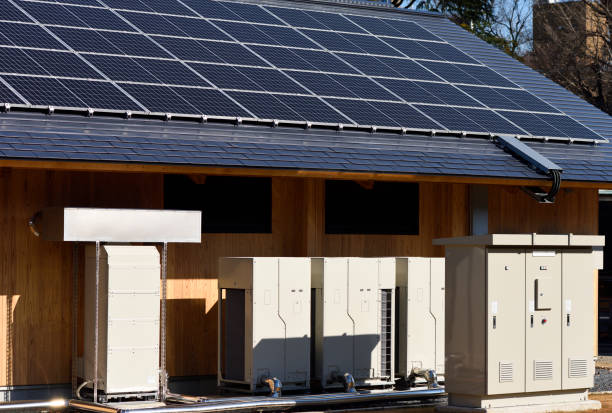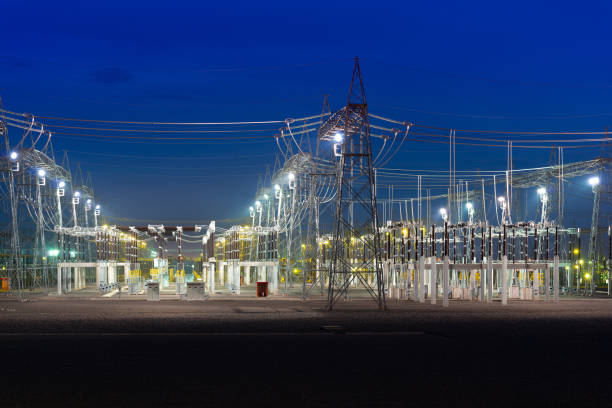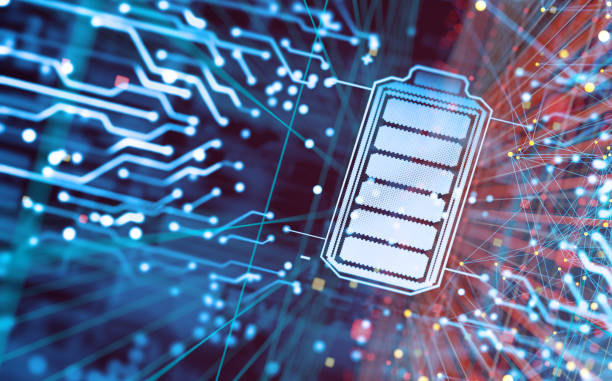Electrochemical energy storage is battery energy storage. Its technical characteristics are the use of chemical elements as energy storage media. The charging and discharging processes are actually the chemical reaction or price change process of the energy storage medium. In the context of zero-carbon goals, energy storage is becoming increasingly important.
We analyzed the driving factors of the electrochemical energy storage market, mainly as follows:
 The electrochemical energy storage technology route is constantly innovating, and its technology diversification trend is obvious; in addition to lithium-ion batteries, the cycle life of emerging technologies such as sodium-ion batteries is also constantly improving, and is expected to become the development direction of electrochemical energy storage in the future. With the rapid development of the energy storage battery market, energy storage batteries are expected to be more widely used in grid-side and user-side scenarios, bringing continuous impetus to the development of the industry.
The electrochemical energy storage technology route is constantly innovating, and its technology diversification trend is obvious; in addition to lithium-ion batteries, the cycle life of emerging technologies such as sodium-ion batteries is also constantly improving, and is expected to become the development direction of electrochemical energy storage in the future. With the rapid development of the energy storage battery market, energy storage batteries are expected to be more widely used in grid-side and user-side scenarios, bringing continuous impetus to the development of the industry.
 China’s energy storage industry started late but is developing rapidly. Government departments began to focus on the development of the energy storage industry in 2009 and established special funds for the energy storage industry, which are also reflected in national scientific research projects. Since then, with the emergence of an investment boom in advanced energy storage material technology and high-performance battery technology, China’s new energy industry market demand has continued to expand. The country has successively introduced some relevant regulations, plans, etc., and provided financial support for the development of the energy storage industry.
In July 2021, the National Energy Administration proposed the relevant policy of “prioritizing grid connection”, and new energy distribution and storage has gradually become one of the main application scenarios of electrochemical energy storage. The construction of the project has also overcome traditional pain points such as high new energy distribution and storage costs, single revenue channels, and low utilization efficiency. Companies have invested in the construction of new energy storage power stations to dispatch peak and valley power.
To learn more about the lithium battery industry, stay tuned for more updates on the website or follow MK Energy’s social media accounts.
China’s energy storage industry started late but is developing rapidly. Government departments began to focus on the development of the energy storage industry in 2009 and established special funds for the energy storage industry, which are also reflected in national scientific research projects. Since then, with the emergence of an investment boom in advanced energy storage material technology and high-performance battery technology, China’s new energy industry market demand has continued to expand. The country has successively introduced some relevant regulations, plans, etc., and provided financial support for the development of the energy storage industry.
In July 2021, the National Energy Administration proposed the relevant policy of “prioritizing grid connection”, and new energy distribution and storage has gradually become one of the main application scenarios of electrochemical energy storage. The construction of the project has also overcome traditional pain points such as high new energy distribution and storage costs, single revenue channels, and low utilization efficiency. Companies have invested in the construction of new energy storage power stations to dispatch peak and valley power.
To learn more about the lithium battery industry, stay tuned for more updates on the website or follow MK Energy’s social media accounts.
Sustainable energy’s share of electricity generation continues to rise
The development of clean energy such as wind and solar is in line with the climate action goals of the Paris Agreement. Sustainable energy sources, including solar and wind, are taking an increasing share of the electricity generation market. However, these energy sources are intermittent, and power generation has intraday and seasonal fluctuations. The share of sustainable energy in global electricity generation is expected to increase significantly from 6.5% in 2021 to 22.0% in 2050, which will also increase the volatility of the power grid. The energy storage system ensures the stability of sustainable energy supply through real-time storage and release of energy, and provides services such as peak regulation, frequency regulation, and power distribution for the power grid. Driven by rising sustainable energy capacity, demand for energy storage systems will grow significantly in the future.Shifting to clean electricity amid electrification trends
Electricity generation accounts for a third of global CO2 emissions, and with electricity demand expected to increase significantly, rapid decarbonization is critical to achieving net zero emissions. On the one hand, CCUS technology will gradually play an important role in decarbonization in the power industry in the future, capturing and storing greenhouse gas emissions generated by fossil fuel power generation; on the other hand, under the trend of electrification, the power system is also accelerating the transformation to clean electricity. , as clean electricity becomes an increasingly important energy source, the demand for energy storage will continue to rise to solve intermittency issues and balance power supply and demand.Electrochemical energy storage offers many advantages
Among different energy storage technology routes, pumped hydro energy storage accounts for more than 90% of the installed capacity. However, pumped hydro energy storage has disadvantages such as geographical restrictions, long power station construction period, and large initial investment. Compared with pumped hydro energy storage, electrochemical energy storage has the advantages of small geographical restrictions, short construction period, and continuous cost reduction. It has become the fastest growing energy storage method in recent years, and its market share has increased from less than 1 in 2017. %, rapidly increasing to about 20% in 2022. Electrochemical energy storage is expected to become the mainstream energy storage technology in the future. The electrochemical energy storage technology route is constantly innovating, and its technology diversification trend is obvious; in addition to lithium-ion batteries, the cycle life of emerging technologies such as sodium-ion batteries is also constantly improving, and is expected to become the development direction of electrochemical energy storage in the future. With the rapid development of the energy storage battery market, energy storage batteries are expected to be more widely used in grid-side and user-side scenarios, bringing continuous impetus to the development of the industry.
The electrochemical energy storage technology route is constantly innovating, and its technology diversification trend is obvious; in addition to lithium-ion batteries, the cycle life of emerging technologies such as sodium-ion batteries is also constantly improving, and is expected to become the development direction of electrochemical energy storage in the future. With the rapid development of the energy storage battery market, energy storage batteries are expected to be more widely used in grid-side and user-side scenarios, bringing continuous impetus to the development of the industry.
Electrochemical energy storage costs fall
The global average LCOE of electrochemical energy storage dropped from 1.5-2.5 yuan/kWh in 2018 to 0.4-0.7 yuan/kWh in 2022, and is expected to further drop to 0.2-0.4 yuan/kWh in 2027. Costs are primarily driven by advances in battery technology, including improvements in energy density, reductions in manufacturing costs, and increases in battery life cycles. The continued decline in the cost of electrochemical energy storage will stimulate the growth of the electrochemical energy storage industry. Based on China’s mature lithium iron phosphate and other battery industry chain supporting and technology accumulation, the cost of electrochemical energy storage is expected to continue to decline, and it is expected to achieve overall profitability in the electrochemical energy storage industry.Favorable policies promote the development of electrochemical energy storage
Governments in major economies have introduced policies to encourage the development of energy storage. For example, in the United States, the federal Investment Tax Credit provides tax credits for residential and commercial and industrial end-user installations of energy storage equipment. In the EU, the “Battery Innovation Roadmap 2030” released various measures to promote the localization and large-scale development of energy storage technology. China’s energy storage industry started late but is developing rapidly. Government departments began to focus on the development of the energy storage industry in 2009 and established special funds for the energy storage industry, which are also reflected in national scientific research projects. Since then, with the emergence of an investment boom in advanced energy storage material technology and high-performance battery technology, China’s new energy industry market demand has continued to expand. The country has successively introduced some relevant regulations, plans, etc., and provided financial support for the development of the energy storage industry.
In July 2021, the National Energy Administration proposed the relevant policy of “prioritizing grid connection”, and new energy distribution and storage has gradually become one of the main application scenarios of electrochemical energy storage. The construction of the project has also overcome traditional pain points such as high new energy distribution and storage costs, single revenue channels, and low utilization efficiency. Companies have invested in the construction of new energy storage power stations to dispatch peak and valley power.
To learn more about the lithium battery industry, stay tuned for more updates on the website or follow MK Energy’s social media accounts.
China’s energy storage industry started late but is developing rapidly. Government departments began to focus on the development of the energy storage industry in 2009 and established special funds for the energy storage industry, which are also reflected in national scientific research projects. Since then, with the emergence of an investment boom in advanced energy storage material technology and high-performance battery technology, China’s new energy industry market demand has continued to expand. The country has successively introduced some relevant regulations, plans, etc., and provided financial support for the development of the energy storage industry.
In July 2021, the National Energy Administration proposed the relevant policy of “prioritizing grid connection”, and new energy distribution and storage has gradually become one of the main application scenarios of electrochemical energy storage. The construction of the project has also overcome traditional pain points such as high new energy distribution and storage costs, single revenue channels, and low utilization efficiency. Companies have invested in the construction of new energy storage power stations to dispatch peak and valley power.
To learn more about the lithium battery industry, stay tuned for more updates on the website or follow MK Energy’s social media accounts. 
